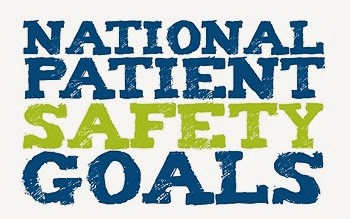Discussion 5 Diversity – Answered
After studying Module 5: Lecture Materials & Resources, discuss the following: Jay and Sue Kim, ages 29 and 26 years and married for 2 years, immigrated from South Korea and settled in Los Angeles. They have lived in a small one-bedroom apartment since their arrival. Both graduated from the same Korean university with baccalaureate degrees in English literature. They have one child, Joseph, age 1 year. When they arrived in the United States, Jay was unable to find a job because of his poor proficiency in English, despite his major in English literature. He eventually obtained a job with a moving company through a church friend. Sue is not working because of their son. Although the Kim’s did not attend a church before immigration, they are now regularly attending a Korean Protestant church in their neighborhood.Sue is pregnant again, determined by a home pregnancy kit, with their second child and concerned about the medical costs. They did not use any contraceptives because she was breastfeeding. Because of financial limitations, Sue did not initially have prenatal care with her first pregnancy. However, she did keep up with the Korean traditional prenatal practice, tae-kyo. Eventually, she received help from her church and delivered a healthy son. She is not sure whether she can get financial help from her church again but is confident that her second child will be healthy if she follows the Korean traditional prenatal practices.Jay is concerned about job security because he recently heard from colleagues that the moving company might soon go bankrupt. Although Jay has not been satisfied with his current job (he thinks that he is overqualified), this news is still a cause for concern. Moreover, Sue’s recent pregnancy has made Jay more stressed, and he has started drinking alcohol. Joseph cannot stand up by himself and still wants to be breastfed. Although Sue has tried to give foods such as oranges, apples, steamed rice, and milk (because she is now pregnant), Joseph refuses to eat them and cries for breastfeeding. Joseph’s weight is low-normal for same-age babies. Describe the Korean cultural practice tae-kyo. Is this practice congruent with allopathic recommendations for prenatal care? How do food choices among Koreans differ with pregnancy and postpartum? Describe cultural attitudes toward drinking among Koreans. Identify two or three culturally congruent strategies a healthcare provider might use to address Jay’s drinking. Submission Instructions: Your initial post should be at least 500 words, formatted and cited in current APA style with support from at least 2 academic sources. Your initial post is worth 8 points. You should respond to at least two of your peers by extending, refuting/correcting, or adding additional nuance to their posts. Your reply posts are worth 2 points (1 point per response.)All replies must be constructive and use literature where possible. Please post your initial response by 11:59 PM ET Thursday, and comment on the posts of two classmates by 11:59 PM ET Sunday. You can expect feedback from the instructor within 48 to 72 hours from the Sunday due date (Discussion 5 diversity – Answered).
Answer
Korean Cultural Practices and Healthcare Considerations for the Kim Family
Tae-kyo: Korean Traditional Prenatal Care
Tae-kyo is a traditional Korean practice focusing on the prenatal period, aiming to ensure the health and well-being of both the mother and the unborn child. This practice involves various rituals and behaviors intended to create a positive environment for the fetus. Tae-kyo includes dietary restrictions, mental and emotional regulation, and engagement in positive activities such as reading or listening to classical music, believing that these practices can influence the child’s development positively (Park & Cho, 2019).
While tae-kyo emphasizes holistic well-being, it may not fully align with allopathic prenatal care recommendations. Allopathic medicine stresses regular prenatal visits, screenings, and interventions to monitor the health of the mother and fetus. Although tae-kyo promotes a healthy lifestyle, it lacks the medical assessments and treatments critical in allopathic care. Therefore, integrating tae-kyo with allopathic care can provide comprehensive prenatal support, ensuring both cultural sensitivity and medical safety.
Food Choices During Pregnancy and Postpartum in Korean Culture
In Korean culture, food choices during pregnancy and postpartum are deeply rooted in traditional beliefs. During pregnancy, women are encouraged to consume foods believed to be beneficial for the fetus, such as seaweed soup, which is rich in iodine and calcium (Kang et al., 2020). Postpartum, the diet typically includes warm, easily digestible foods to aid recovery and promote lactation. Seaweed soup remains a staple, consumed multiple times daily for its nutritional benefits and to help cleanse the blood and improve milk production.
These dietary practices emphasize the importance of warm, nutritious foods, contrasting with some Western practices that might focus more on balanced nutrition without the same cultural emphasis on specific foods. Healthcare providers should recognize these preferences and work to incorporate them into dietary plans that also meet broader nutritional guidelines.
Cultural Attitudes Toward Drinking Among Koreans
Drinking alcohol holds significant social and cultural importance in Korea, often associated with social bonding and stress relief. However, it can also lead to problematic behaviors, particularly when used as a coping mechanism for stress (Choi et al., 2017). For Jay, his increased alcohol consumption due to job stress and family pressures highlights the need for culturally sensitive interventions.
Culturally Congruent Strategies to Address Jay’s Drinking
Culturally Sensitive Counseling:
Engage Jay in discussions about his drinking habits within the context of Korean cultural norms. Utilize motivational interviewing techniques to explore the reasons behind his drinking and the impact on his family. Emphasize the importance of maintaining his health for his family’s well-being and consider involving a counselor who understands Korean cultural nuances.
Social Support and Community Resources:
Encourage Jay to seek support from his church community, which has already provided significant assistance to his family. Community leaders or support groups within the church can offer a culturally familiar and supportive environment to address his stress and drinking habits.
Stress Management Techniques:
Introduce stress management strategies that resonate with Jay’s cultural background, such as meditation, traditional Korean exercises, or engaging in tae-kyo practices alongside Sue. These methods can provide alternative ways to manage stress without resorting to alcohol.
Conclusion
The Kim family’s situation underscores the importance of culturally competent healthcare. Understanding and integrating traditional practices like tae-kyo with allopathic care, respecting dietary traditions, and addressing cultural attitudes towards drinking are crucial in providing holistic and effective support. By employing culturally congruent strategies, healthcare providers can better address the unique needs of immigrant families, ensuring both cultural respect and medical efficacy.
References
Choi, S., Lee, J., & Lee, H. (2017). Alcohol consumption and problem drinking in Korean adults: Focusing on problem drinking-related characteristics. Journal of Korean Academy of Nursing, 47(1), 1-12.https://synapse.koreamed.org/articles/1003159
Kang, N., Kim, Y., & Park, H. (2020). Maternal dietary patterns and birth outcomes: A Korean cohort study. Nutrients, 12(4), 1103.
Park, M., & Cho, H. (2019). The effects of traditional prenatal practices (Tae-kyo) on the health of pregnant women and newborns in Korea. Journal of Korean Medical Science, 34(9), e89.
Do you need a similar assignment done for you from scratch? Order now!
Use Discount Code "Newclient" for a 15% Discount!








:max_bytes(150000):strip_icc()/an-overview-of-psychopathology-4178942-db4d007d4b104beaa89b4768a0f648fa.jpg)
